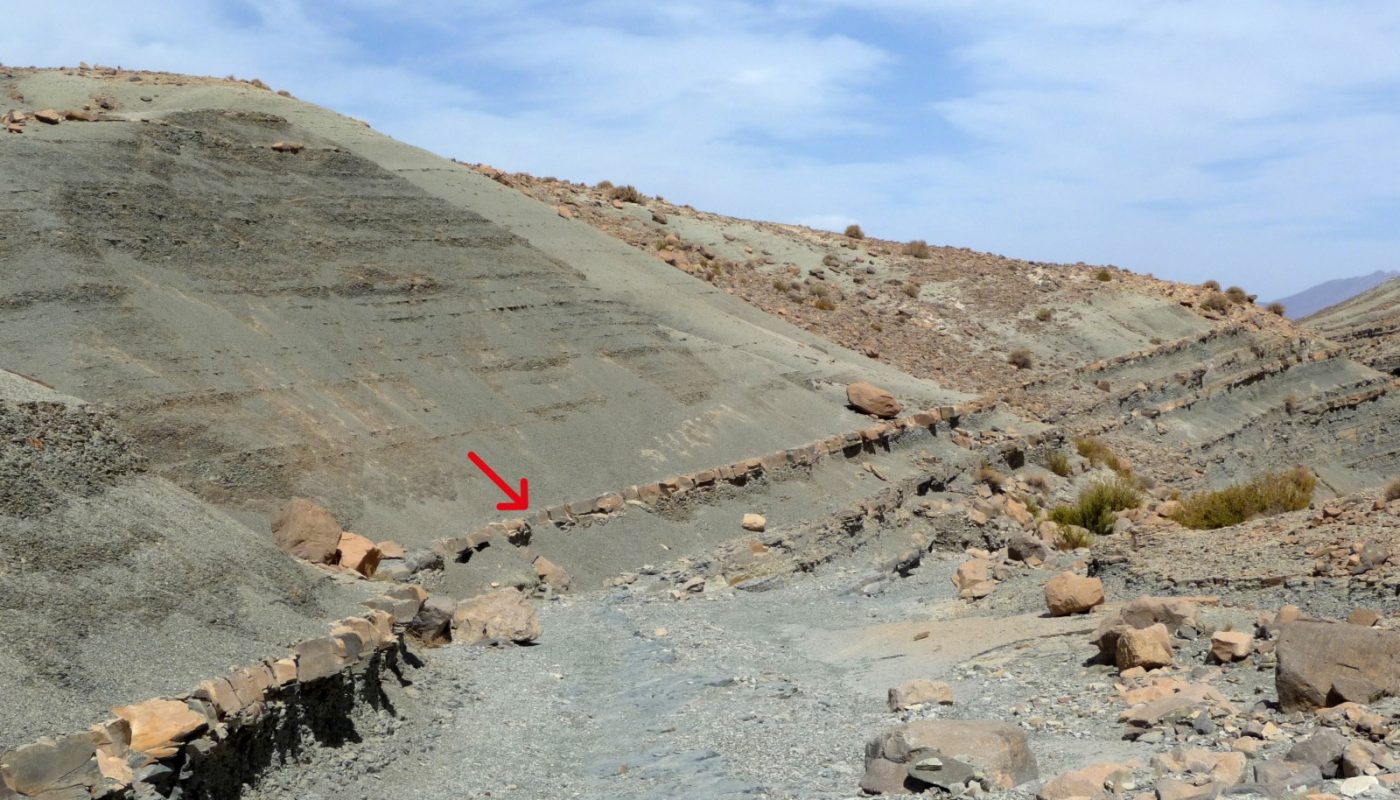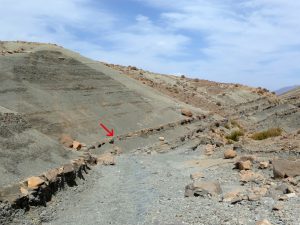
Every geologist has heard at least once in his career the term unconformity and all its different flavours (e.g. disconformity, paraconformity, angular unconformity, etc…). These terms are part of the basic learning in geology, often taught during first year classes in Stratigraphy. Well, it seems we’ll have to add one term in these lectures: Xenoconformity!
In a recently published paper, Carroll1 discusses some peculiar stratigraphic surfaces that do not fit into the available stratigraphic lexicon, namely those associated with conformable non-Waltherian facies changes…
…“Sorry… What the heck are you just talking about?!!…”.
Ok, let’s summarize that. The term conformable refers to a stratigraphic surface, i.e. a surface separating two distinct beds, that do not show any sign of hiatus, meaning that the two successive beds were deposited on top of each other without any significant time span or tectonic activity in between them. The barbaric “Non-Waltherian facies change” calls upon your sedimentological background and the well-known Walther Law. This latter stipulates that those facies that were once laterally adjacent (i.e. referring to change of space at a given time) are ideally recorded continuously in vertical sedimentary successions (i.e. referring to change of time at a given point of space). Any vertical change that deviate from this hints at a “non-Waltherian” facies change, implying that something odd, such as a time gap for instance, is occurring within the sedimentary record. These are mostly unconformity surfaces.
Yet, what happens when sedimentary systems abruptly change due to geologically instantaneous environmental change? If there’s no erosion or time gap associated with this event in the stratigraphic record (i.e. it is not recorded by an unconformity surface), how do we call it? A xenoconformity! Before Carroll’s paper, all the available stratigraphic terms required either a temporal discontinuity, adherence to Walther’s law, or both. As such, none was strictly applicable to these peculiar surfaces, hence the significant leap forward.
An example? Have a look at this lowermost Toarcian surface from the deep-water setting in the Central High Atlas of Morocco. It marks the transition from limestone-marl alternations to a purely siliciclastic (clay-dominated, with several occurrences of siltstone beds) sequence. It is the deep-water record of the regional demise of the Pliensbachian neritic carbonate factory, following a major environmental upheaval that took place at the stage boundary2. During the Jurassic, there was no significant pelagic carbonate factory. So almost all deep-water carbonate muds were ultimately sourced from the export of shallow-water benthic carbonates. If there’s no neritic carbonate factory anymore, there’s no more carbonate mud to be exported. Throughout Morocco, the Pliensbachian-Toarcian boundary event resulted also in a complete reorganisation of the sedimentary dynamic: On the one hand, during the Pliensbachian, there were thriving carbonate platforms all around the High Atlas basins. On the other hand, during the Toarcian, a siliciclastic sedimentary system developed as a result from the accompanying climatic switch, from arid to humid conditions. A typical non-Waltherian facies change. Moreover, there is no sedimentological or biostratigraphic evidence for a hiatus associated with this surface. There you go; you’re seeing your first xenoconformity!

Picture caption: Pliensbachian-Toarcian (Lower Jurassic) transition close to Amellago (Central High Atlas, Morocco). Limestone-marl alternations are abruptly followed by a clay-dominated sequence, without any evidence for a hiatus in between the two. The resulting surface (red arrow) is a xenoconformity. See Bodin et al.2 for more details on the environmental events occurring at this stage boundary.
There’s still a lot of time ahead before this new term becomes of common usage by the stratigraphers in peculiar, and the geological community in general, but let’s face it: it elegantly fills a gap in our stratigraphic lexicon applicable to a domain, rapid geological/environmental changes, that is the focus of much studies. Hence, xenoconformities formalise in stratigraphic term the sedimentary record of so-called environmental “tipping points”.
1 Carroll A.R. (2017). Xenoconformities and the stratigraphic record of paleoenvironmental change. Geology 45 (7), 639–642.
2 Bodin S., Krencker F.-N., Kothe T., Hoffmann R., Mattioli E., Heimhofer U., Kabiri, L. (2016). Perturbation of the carbon cycle during the late Pliensbachian – Early Toarcian: New insight from high-resolution carbon isotope records in Morocco. Journal of African Earth Sciences 116, 89–104.

Pingback: GeoLog | Looking back at the EGU Blogs in 2018: a competition